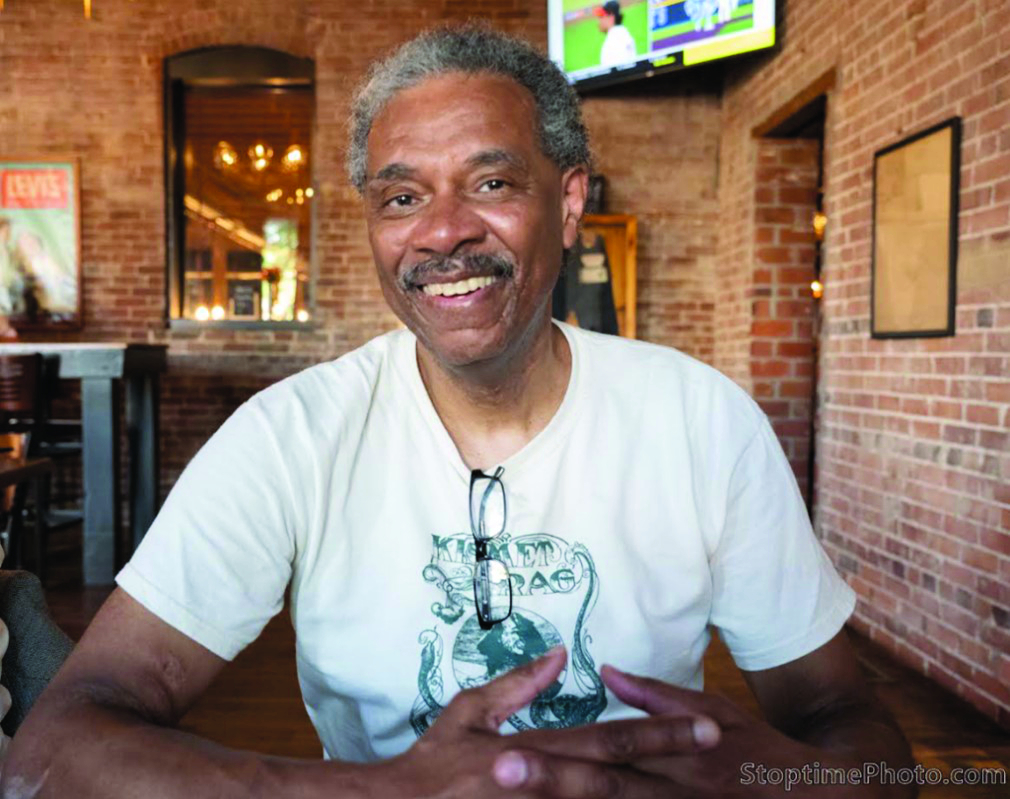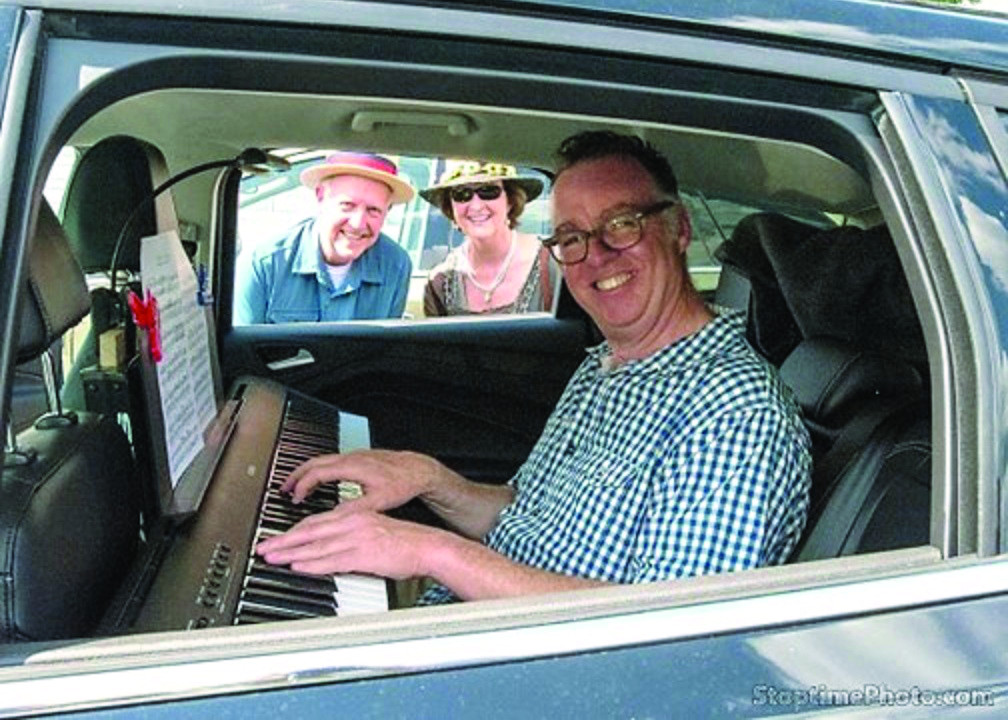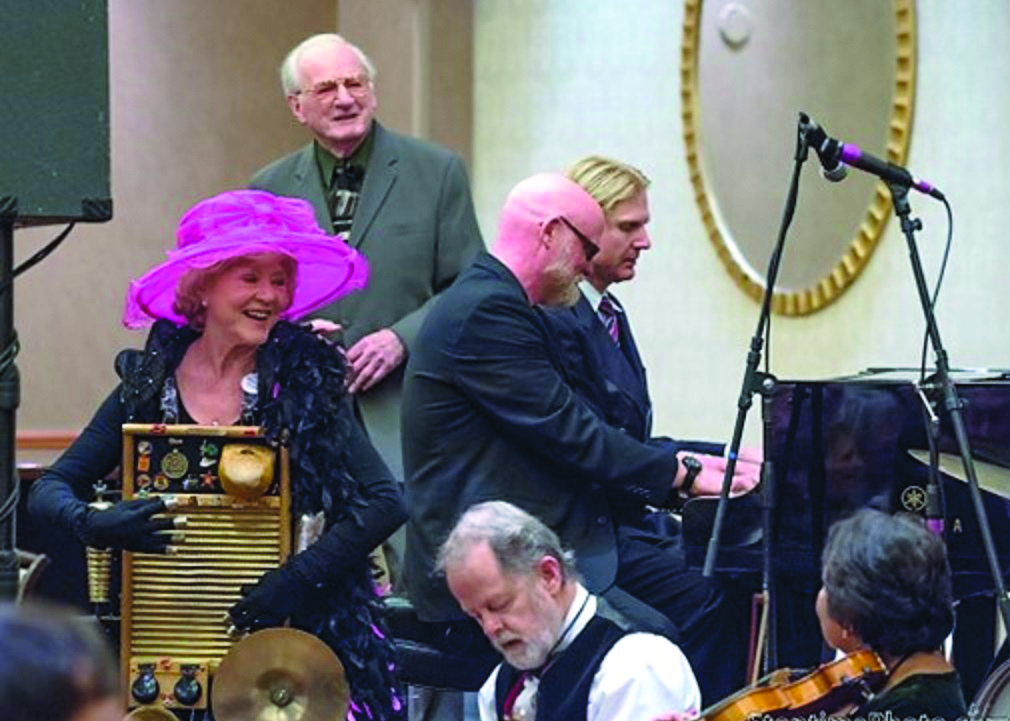Richard Berry is a fine musician and has performed at many ragtime events since the 1980s. In addition to his musical talent however, Rich has gifted the ragtime community with scrapbooks filled with thousands of professional quality festival photographs dating back to 2006. A visit to his stoptimephoto.com studio website reveals salient photos from each event through the years and is enough to draw readers inside to enjoy his photographic chronicle of ragtime festivals from past years.
Richard moves unobtrusively around a venue photographing nearly every aspect of an event, taking both formal images and candid shots of performers and members of the audience. His images have become a visual Who’s Who of ragtime.
I communicated with Rich after this year’s Scott Joplin Ragtime Festival in Sedalia and inquired about his work. He was kind enough to graciously respond.

(Stoptime Photo)
Larry Melton: What is your musical background including your interest in ragtime?
Richard Berry: I discovered Ragtime after seeing the movie The Sting. In early 1974, I bought the soundtrack album which featured six Scott Joplin compositions including “The Entertainer,” which was then a big hit on the radio. This led to the discovery and acquisition of Ragtime recordings by Joshua Rifkin, The New England Conservatory Ragtime Ensemble, The Southland Stingers, and Dick Zimmerman. For about a year, Dick’s wonderful set Scott Joplin: The Complete Works was the only recording that covered practically all of Joplin’s work. Collectively, these ragtime recordings cultivated a strong desire to play Ragtime, so I bought the Joplin folio (The New York Public Library’s Collected Works of Scott Joplin) and a used upright piano and began working on ragtime (in 1976).
I had no musical training or prior experience with any instrument. In 1982, I met brilliant Ragtimists, Bob and Linda Milne in Farmington, Michigan, who encouraged me to attend the Toronto Ragtime Society’s annual Ragtime Bash in Toronto. Upon arrival at the Cara Inn, I met many amazing people including Bob Darch, Glenn Jenks, Catherine Wilson, Bess Fell, Dave Jasen, Jack Hutton, and Ragtime Society president John Arpin, who Eubie Blake dubbed “The Chopin of Ragtime.”
John was truly inspirational to all who knew him, a superlative musician in a class by himself, or as Joplin might have described him: a nonpareil. I was invited to play in the formal concert. Prior to this, I had never performed publicly, so the stage fright was intense, but somehow, I managed to deliver a coherent set. From that point forward, I was proud to be a Ragtimer and was compelled to return year after year for a guaranteed infusion of inspiration fueled by the passion and talent of so many incredible people.
I like that, the “inspiration fueled by the passion and talent of so many incredible people.” When did you get into photography and begin doing ragtime event work?
I have been practicing photography since the age of twelve. As a teenager, I always carried a camera with me, and acquired my first Nikon in 1974. I began photographing auto shows around 1980. When I started coming to Ragtime festivals, I didn’t take too many photos, as my primary concern was the music (both listening and playing). However, over the years, I began photographing more and playing less, perhaps because I was searching for a way to document the unique experiences of the festivals.
Photography has always been an avocation, while my vocation has been electronic product engineering. For thirty-three years, I held various design engineering roles at Ford Motor Company, Visteon Corporation, and VOXX International. Some of my responsibilities included component development for concept vehicles that were premiered at auto and trade shows to hint at future product offerings.
That helps explain your mantra on your email salutation “Hardware is Brain, Software is Mind.” That helps address my curiosity about your car. What is the story behind the piano in the backseat?
Performance anxiety has always been a troublesome reality for me and unfortunately, most festivals do not have practice rooms. During a long drive home from a festival one year, I was thinking about how to minimize it. A portable keyboard seemed to be the answer since it could easily be transported to festivals in the back seat of my car and moved into my hotel room for use when needed.
The hotel room is not always an optimal practice room since the performance venues may not be nearby. However, my car is generally accessible wherever I happen to be, which makes it the obvious choice for a practice room. The back seat serves as the piano bench with the piano mounted at a performer-friendly height and angle.

Kitty Wilson, Max Morath, Jeff Barnhart, Frederick Hodges at the 2014 West Coast Ragtime Festival (Stoptime Photo)
Use cases drive the design requirements of any electronic system. “The Private Practice Room” was the initial use case of the Car Piano, but over time, other use cases have emerged including “The Curbside Concert.” In 2019, it was my good fortune to witness the incredible piano duo of Stephanie Trick and Paolo Alderighi demonstrate this use case in my car in Sedalia.
Do you have other photography subject interests?
I also enjoy photographing auto shows. I haven’t done it for a while now but hope to return to some soon. I enjoy photographing people the most, perhaps because of the challenge of capturing them in interesting poses while simultaneously getting all the technical details right including composition, focus, lighting, and background.
That is definitely what separates your work from most of the rest of us. Do you have any future photography or music plans?
I have not performed piano in quite some time, but I do hope to ramp up practice and resume performing sometime in the future. I am getting old and it feels like time is running out. I also plan to create a collection of my favorite photographs taken over the decades and will also continue creating new images at Ragtime festivals!
As for aging, I know old, and you have a way yet to reach your seniority. However, you have achieved venerability. Thank you, my friend.
I certainly hope Richard’s book of photographs will be available for us all to purchase and enjoy. He goes to a great deal of expense in traveling, accommodations, and daily expenses on the road in order to capture the images of our musical events. Look over his website and purchase some images that are meaningful to you.

Kitty Wilson, Max Morath, Jeff Barnhart, Frederick Hodges at the 2014 West Coast Ragtime Festival (Stoptime Photo)
I have many personal favorites from the Stoptime collection but his photo from the 2017 West Coast Festival of a smiling Max Morath standing behind Jeff Barnhart, Frederick Hodges, and “Washboard Kitty” Wilson is a favorite. Richard captured the pure joy of that moment presided over by “Mr. Ragtime,” himself. Thanks for the memories, Richard.
Larry Melton was a founder of the Scott Joplin Ragtime Festival in 1974 and the Sedalia Ragtime Archive in 1976. He was a Sedalia Chamber of Commerce manager before moving on to Union, Missouri where he is currently helping to conserve the Ragtime collection of the Sedalia Heritage Foundation. Write him at lcmelton67@gmail.com.






















